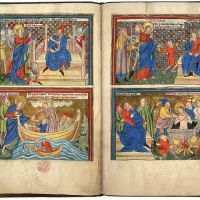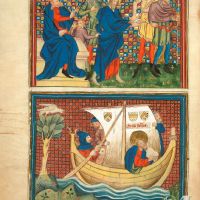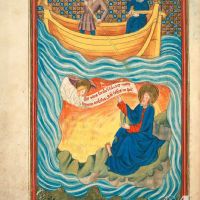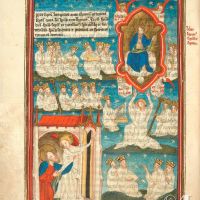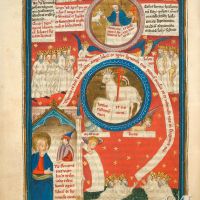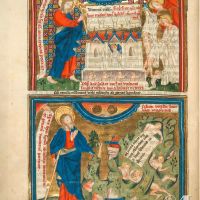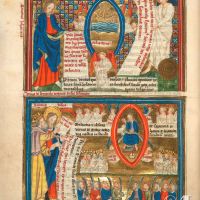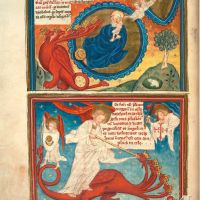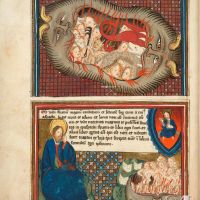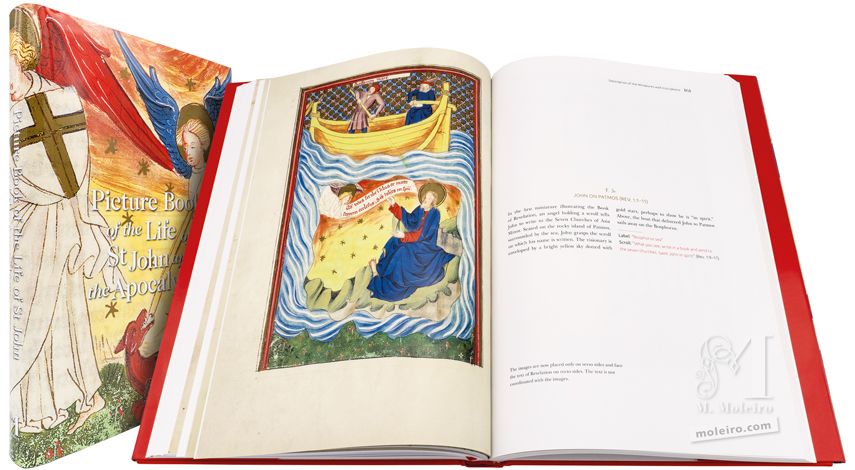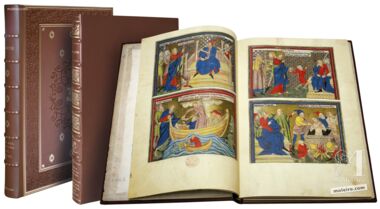Picture Book of the Life of St John and the Apocalypse
The British Library, London
Shelfmark: Add. Ms. 38121
Date: c. 1400
Provenance: South of the Netherlands
Size: ± 320 x 200 mm
100 pages, 94 miniatures illuminated with gold
Brown leather binding
Full-colour commentary volume, written by Richard K. Emmerson (Visiting Distinguished Professor of Art History, Florida State University), Peter J. Kidd (Freelance Researcher. Former Curator of Illuminated Manuscripts at the British Library) and Britt Boler Hunter (Patricia Rose Teaching Fellow in Art History, Florida State University).
Unique and unrepeatable first edition, strictly limited to 987 numbered and authenticated copies.
Date: c. 1400
Provenance: South of the Netherlands
Size: ± 320 x 200 mm
100 pages, 94 miniatures illuminated with gold
Brown leather binding
Full-colour commentary volume, written by Richard K. Emmerson (Visiting Distinguished Professor of Art History, Florida State University), Peter J. Kidd (Freelance Researcher. Former Curator of Illuminated Manuscripts at the British Library) and Britt Boler Hunter (Patricia Rose Teaching Fellow in Art History, Florida State University).
Unique and unrepeatable first edition, strictly limited to 987 numbered and authenticated copies.
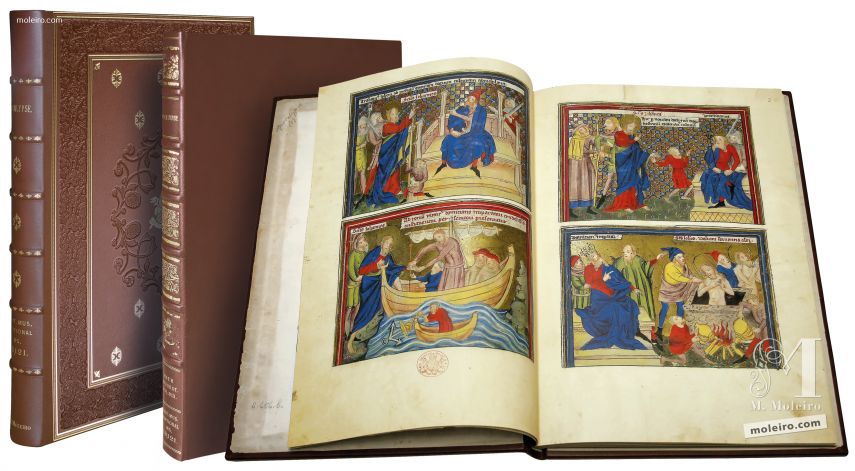
Shelfmark: Add. Ms. 38121
Date: c. 1400
Provenance: South of the Netherlands
Size: ± 320 x 200 mm
100 pages, 94 miniatures illuminated with gold
Brown leather binding
Full-colour commentary volume, written by Richard K. Emmerson (Visiting Distinguished Professor of Art History, Florida State University), Peter J. Kidd (Freelance Researcher. Former Curator of Illuminated Manuscripts at the British Library) and Britt Boler Hunter (Patricia Rose Teaching Fellow in Art History, Florida State University).
Unique and unrepeatable first edition, strictly limited to 987 numbered and authenticated copies.
Date: c. 1400
Provenance: South of the Netherlands
Size: ± 320 x 200 mm
100 pages, 94 miniatures illuminated with gold
Brown leather binding
Full-colour commentary volume, written by Richard K. Emmerson (Visiting Distinguished Professor of Art History, Florida State University), Peter J. Kidd (Freelance Researcher. Former Curator of Illuminated Manuscripts at the British Library) and Britt Boler Hunter (Patricia Rose Teaching Fellow in Art History, Florida State University).
Unique and unrepeatable first edition, strictly limited to 987 numbered and authenticated copies.

